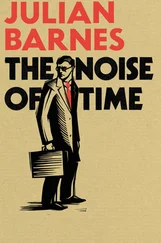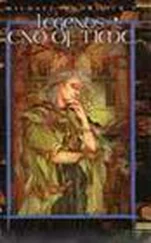If this assumption were correct, our world would return more and more to thermal equilibrium; but because the whole universe is so great, it might be probable that at some future time some other world might deviate as far from thermal equilibrium as our world does at present. Then the aforementioned H curve would form a representation of what takes place in the universe. The summits of the curve would represent the worlds where visible motion and life exist.
Boltzmann returned to this theme a year later, this time writing in German. The following is my translation:
One has a choice between two pictures. One can suppose that the complete universe is currently in a most unlikely state. However, one can also suppose that the eons during which improbable states occur are relatively short compared with all time, and the distance to Sirius is small compared with the scale of the universe. Then in the universe, which otherwise is everywhere in thermal equilibrium, i.e. is dead, one can find, here and there, relatively small regions on the scale of our stellar region (let us call them isolated worlds) that during the relatively short eons are far from equilibrium. What is more, there will be as many of these in which the probability of the state is increasing as decreasing. Thus, for the universe the two directions of time are indistinguishable, just as in space there is no up or down. But just as we, at a certain point on the surface of the Earth, regard the direction to the centre of the Earth as down, a living creature that at a certain time is present in one of these isolated worlds will regard the direction of time towards the more improbable state as different from the opposite direction (calling the former the past, or beginning, and the latter the future, or end). Therefore, in these small regions that become isolated from the universe the ‘beginning’ will always be in an improbable state.
Time Without Time(p. 29) In connection with my suggestion that the brain may be deceiving us when we see motion, it is interesting to note that, as Steven Pinker points out in his How the Mind Works , people with specific types of brain damage see no motion when normal people do see motion. In his words, they ‘can see objects change their positions but cannot see them move—a syndrome that a philosopher once tried to convince me was logically impossible! The stream from a teapot does not flow but looks like an icicle; the cup does not gradually fill with tea but is empty and then suddenly full’.
If the mind can do these things, it may be creating the impression of motion in undamaged brains.
CHAPTER 3
A Timeless World
FIRST OUTLINE
Now I want to start on the attempt to show you that, at least as a logical possibility, the appearance of time can arise from utter timelessness. I shall do this by comparing two imaginary exercises. I begin by presenting you with two bags, labelled Current Theory and Timeless Theory. When you open them up, you find that each bag is filled with cardboard triangles, all jumbled up. Now, triangles come in all shapes and sizes. The first thing you notice is that the first bag contains far fewer triangles than the second. Closer examination reveals that the two collections are very different. Let me begin by describing the contents of Current Theory.
First, you notice that it contains triangles of all different sizes. There is a smallest triangle, very tiny; then another very like it, but a little larger and with a slightly different shape; and so on. In fact, you soon realize that you can lay out all the triangles in a sequence. The order in which they should go is clear because each successive triangle differs only slightly from its predecessor. Their increasing size makes the ordering especially easy. Of course, a real bag can contain only finitely many triangles, but I shall suppose that there are infinitely many and that the sequence is endless, the triangles getting ever larger.
Such a sequence of triangles is like the sequence of experienced instants that I suggested ‘photographing’. It is also like the succession of Newtonian instants from the moment God decided to create the universe, or the succession of states of the universe expanding out of the Big Bang, represented by the smallest triangle. In fact, the contents of Current Theory correspond to the simplest Newtonian universe that can begin to model the complexity of the actual universe: three mass points moving in absolute space and time, as in Figure 1. Initially very close to each other, they move apart so rapidly that gravity cannot pull them back, and they fly off to infinity.
According to Newton, the three mass points are, at all instants, at certain positions in absolute space and form certain triangles. The triangles tell us how the points are placed relative to one another, but not where they are in absolute space. It is such triangles, represented in cardboard, that I imagine have been put into the Current Theory bag. Since we cannot experience absolute space and time directly, I have tried to match the model more closely to our actual experience. The sequence of triangles corresponds to one possible history. There could be many such histories that match the dual scheme of laws and initial conditions. But we find only one in the Current Theory bag.
Next, we examine the Timeless Theory bag. There are two big differences. First, it contains vastly more triangles (it could, in fact, contain all conceivable triangles). More significantly, there are so many of them that it is quite impossible to arrange them in a continuous sequence. Second, the triangles are present in multiple copies. That is, we might, after a very extensive search, find ten identical copies of one particular triangle, two of another, and ten million of yet another. That is really the complete story. It is all that most people would notice.
I think you will agree that the Current Theory bag does match experience quite closely. The triangles stand for each of the instants you experience, and they follow one another continuously, just as the instants do. By giving them to you in a bag and getting you to lay them out in a sequence, I am giving you a ‘God’s eye’ view of history. All its instants are, as it were, spread out in eternity as if you surveyed them from a mountain-top. In fact, this way of thinking about time has long been a commonplace among Christian theologians and some philosophers, and has prompted them to claim that time does not exist but that its instants all exist together and at once in eternity. My claim is much stronger. I am saying that reality, if we could see all of it, is not at all like the contents of the Current Theory bag with its single sequence of states. It is like the contents of the Timeless Theory bag, in which in principle all conceivable states can be present. Nothing in it resembles our experience of history as a unique sequence of states: that experience is usually explained by assuming that there is a unique sequence of states. I deny that there is such a sequence, and propose a different explanation for the experience that prompts us to believe in it. The only thing the bags have in common with our direct experience of time is the parallel between individual triangles as models of individual instants of time.
Actually, the bags share another property – their contents satisfy a law. Given the sequence of triangles of the first bag, clever mathematicians could deduce that they correspond to the triangles formed by three gravitationally interacting bodies. They could even reconstruct the bodies’ positions in absolute space, and the amount of time that elapses between any two of the triangles in the sequence. With the second bag, mathematicians would discover that the numbers in which the different triangles occur are not random – chosen by chance – but satisfy a law. The numbers vary from triangle to triangle in an ordered fashion. But at first glance at least, this law seems to have no connection with the law that creates the unique sequence of triangles in the first bag. Also, there is nothing like the dual scheme of law and initial condition that creates the sequence of the first bag. In a sense that I shall not yet try to explain, there is just a law, with nothing like an initial condition that has to be added to it.
Читать дальше












